Lumia camera tech notes:
From the Lumia 800 review part 2a:
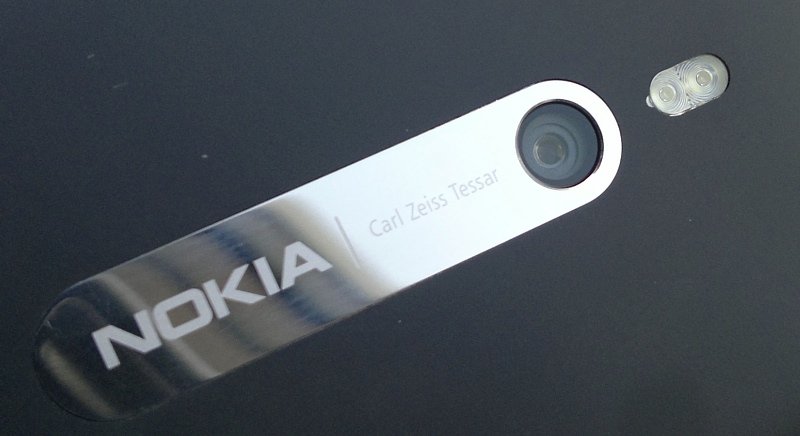
Here are some of the Lumia 800 camera unit notable facts:
- although listed as an 8 megapixel camera, the rectangular sensor's actually 8.7 megapixels - 3552 by 2448 pixels, with the optical circle (the image from the lens) overlaid on the sensor area, as shown below. Nokia then takes a 4:3 image at 8 megapixels or a 16:9 image at 7.1 megapixels, as indicated by the shaded rectangles. Most phone cameras just chop the top and bottom off the 4:3 image to get a 16:9 aspect ratio shot, i.e. you lose information, but in this camera Nokia's 16:9 image includes pixels that would be off to the left and right of the full 4:3/8MP version. The bottom line is that the 16:9 widescreen photos end up at 3552 by 1998 pixels, i.e. 7.1 megapixels.
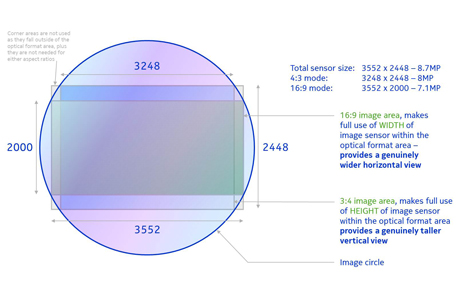 image credit
image credit
- much as Nokia would love to have kept the same camera as the N8's, size constraints were critical for this slim unibody design. The restricted height meant that the sensor also had to be smaller, 1/3" optical format, some 70% less surface area than the N8's, and the pixel size had to be reduced to 1.4 microns. To be fair, these statistics match the cameras in the competing Samsung Galaxy S II and Apple iPhone (to name but two) - the laws of physics prohibit a larger camera in such a thin device.
- the same size constraints mean that a Xenon flash couldn't be squeezed in (though Nokia did apparently want this originally for the N9/Lumia 800) - in the end, the latest generation dual LED flash was used, claimed to be 20% brighter than the previous generation.
- in order to improve low light photos, a wide aperture of F2.2 was used, meaning shallower depth of field but allowing much more light into the camera. The same aperture figure has recently been used on some competing devices, including the HTC Titan, reviewed here, for much the same reasons.
In other words, the Lumia 800 (and N9 before it) and other top smartphones of today all have cameras that are as good as can be achieved given the need for sub-centimetre device thickness.
Comparisons
What you'll be wanting to see, at this point, are a few head to head comparison shots between the Nokia Lumia 800 and the all-conquering N8. In each case the same shot was taken under identical circumstances at full resolution and then cropped in to show the approximate same portion of the subject.
First of all, sunny conditions, a tree about 30 metres away. The Lumia 800 image crop is on top, the N8 on the bottom:
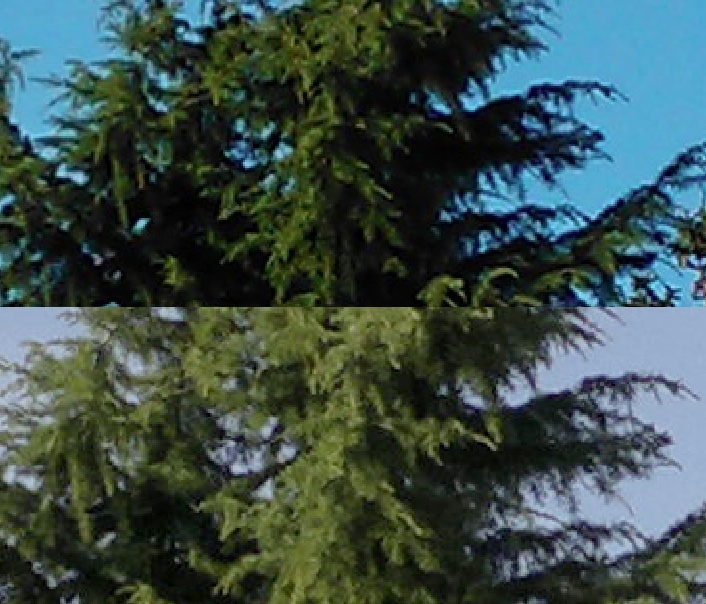
Colouration of the two images is quite different, the Lumia's green and blue are more saturated than reality, while the N8's image is very slightly washed out. However, there's no comparison in terms of overall detail, the N8's is much superior, as you might perhaps expect with its 12mp sensor.
The next test was to look at raw low light performance. I snapped some teddies on a shelf at around a metre in typical indoor (poor) lighting (with flash turned off, so as to discount the N8's superior Xenon flash) and then cropped right in again (Lumia on top, N8 on bottom):
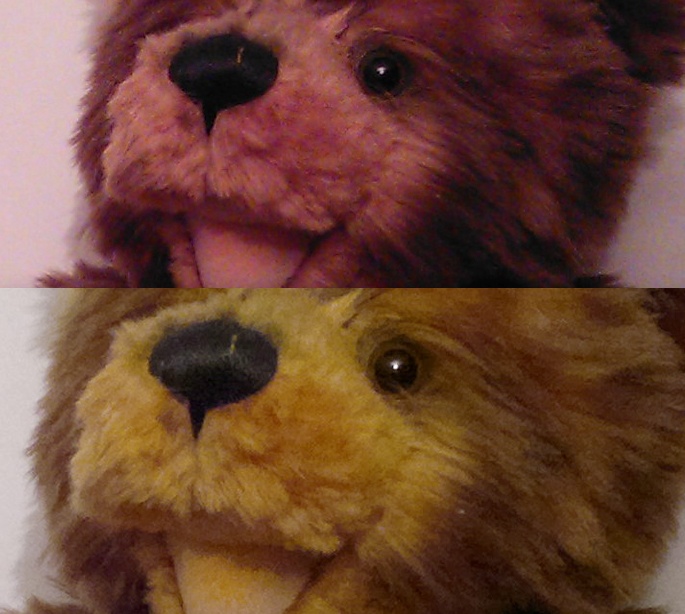
Again, very different colouration, though this time the N8 nails it - it's a brown bear, not a red one! You can see the erroneous colouration in the Lumia 800 shot if you look at the wall behind the teddy - it should be a pale lilac.
Next data point: a cloudy day, light not brilliant, outdoors, shooting a building at around 30 metres, Lumia 800 again on top:

This shot really shows the N8's superiority. There's simply more detail at every level, plus the Lumia's shot is again plagued by a slight 'red' tint that is simply overdone.
Let's include flash photography now. Here's our Christmas tree, snapped at about a metre (about the optimum distance for LED flash), so this should favour the Lumia 800:
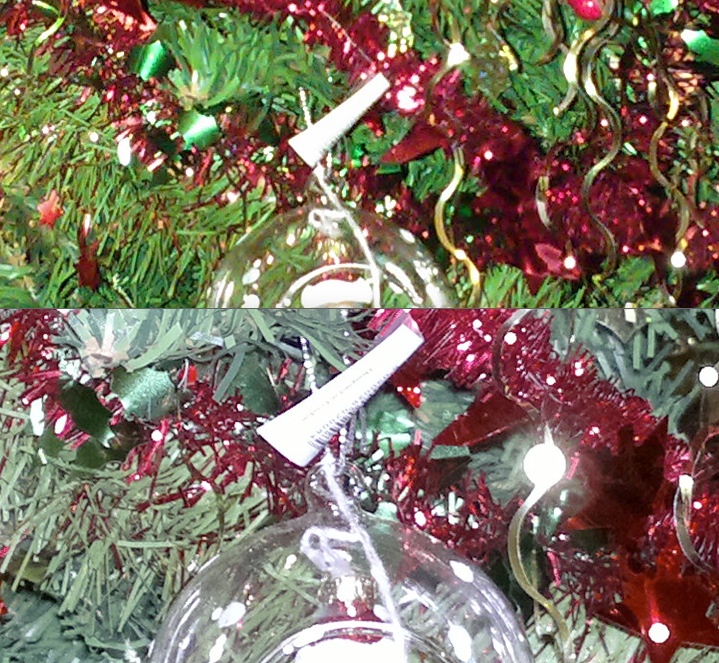
As expected, the Lumia 800 camera acquits itself well here, with excellent colours but slightly fuzzy detail, while the Nokia N8's Xenon flash rather drowns out the tree in a blast of light at that distance, producing washed out greens - but the raw detail is impressive - you can even make out the bar code on the back of the label.
A final data point: snapping my TV aerial against a gorgeous blue (winter sun, but quite strong) sky:
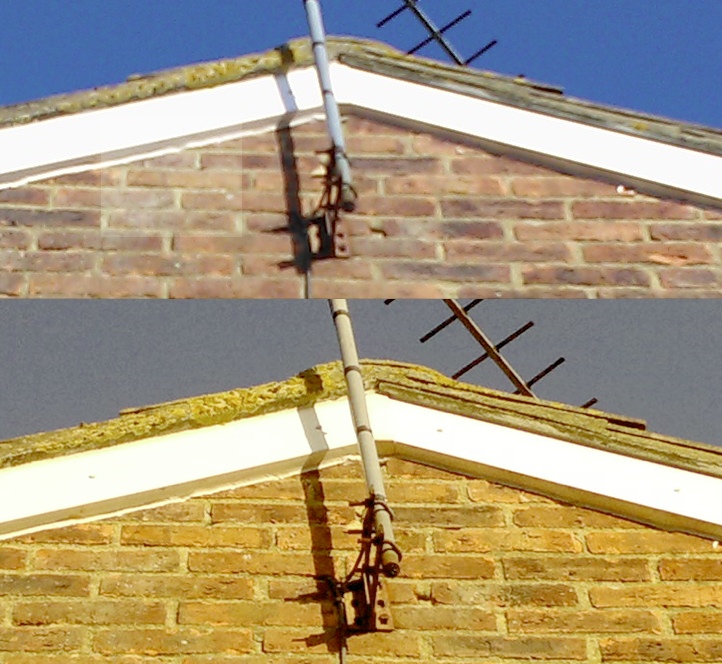
Interestingly, the Lumia 800's camera again gets the colours right, for a change, the bricks and sky really are/were that colour, while the N8's colour processing seemed to get confused by the strong sun on the mass of bricks. Focus is a different matter though - the Lumia 800 shot looks out of focus, but I took the photo four times to make sure - this is the best the Lumia could manage, with the result that the N8's focus and detail blow the Lumia away.
_________________
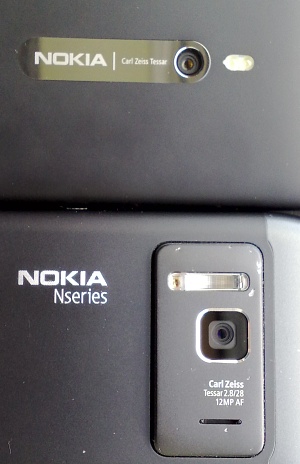 What's fascinating from all this is that comparing phone cameras isn't just about looking at detail, exposure and noise - the very colours themselves vary widely. The variation is quite dramatic here, though. My guess would be that the Lumia 800's camera algorithms aren't yet tuned perfectly, which is where the 'red' tint comes from in some photos. It's early days for the device, mind you, we're expecting numerous updates to appear for the Lumia over the next year. And, from the examples above, even the N8 doesn't always get colours spot on.
What's fascinating from all this is that comparing phone cameras isn't just about looking at detail, exposure and noise - the very colours themselves vary widely. The variation is quite dramatic here, though. My guess would be that the Lumia 800's camera algorithms aren't yet tuned perfectly, which is where the 'red' tint comes from in some photos. It's early days for the device, mind you, we're expecting numerous updates to appear for the Lumia over the next year. And, from the examples above, even the N8 doesn't always get colours spot on.
From the verdict in my Lumia 800 review part 2a:
Progress in smartphone cameras has been coming up against the laws of physics for some time now. The Lumia 800's 8(.7) megapixel, 7mm-high, F2.2 marvel does astoundingly well overall for an autofocus camera with multiple optical elements, considering its size. The slightly 'flatter' form factor compared to competing units makes for very wide angle shots (as you can see in some of the examples above), while keeping optical distortion minimal. It also means that the phone that plays host to it can be uniformly thin, with no unsightly humps or bumps.
Camera (and Nokia) obsessives will be disappointed that the Lumia 800's unit can't match the N8's (from the Symbian world), but then it's not meant to. The N8 was conceived as a flagship centred around a market-leading camera, while the Lumia 800 is both 'just' the first Windows Phone implementation by Nokia and also centred around the overall form factor and experience - that the camera is pretty darned good is something of a bonus. Software updates will fix the reticule and occasional white balance/colouration problems, hopefully.
What will the future hold for Nokia and camera phones? Will we see the like of the N82, N86 and N8 again? I'm still hoping for an N8-01 - Nokia has my number if it wants some input from me!
Steve Litchfield, All About Symbian, 4 Dec 2011
